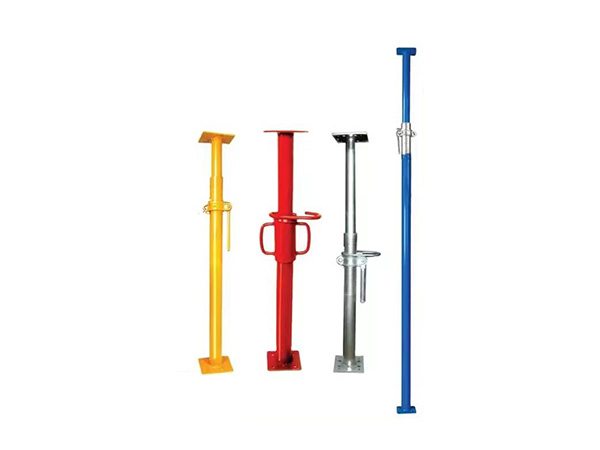- Site Navigation -

Post-Pour Strip Steel Support
The core function is to Post-Pour Strip Steel Support on both sides of the post-pouring belt for a long time before the structural post-pouring belt (such as floor slabs, beams, and......
The core function is to Post-Pour Strip Steel Support on both sides of the post-pouring belt for a long time before the structural post-pouring belt (such as floor slabs, beams, and wall post-pouring belts) is poured, so as to prevent cracking or deformation of the post-pouring belt due to the weight of the structure and construction load. Compared with ordinary steel supports, it needs to withstand a longer period of load (usually 28 days - 6 months, or even longer), and needs to adapt to special working conditions such as structural settlement difference and temperature deformation on both sides of the post-pouring belt, and has stricter requirements in support stiffness, stability and durability, which is a key component to ensure the construction quality and structural safety of the post-pouring belt. From the perspective of core types, post-cast strip supports can be divided into two categories according to the "support form": one is the independent steel pipe support, which is suitable for floor slabs and small-span beam post-pouring belts, using Φ48mm or Φ60mm thickened seamless steel pipes (material Q355B, wall thickness 3.5-5mm), with adjustable top support (support plate 120×120mm) and reinforced crossbars. The spacing between supports should be determined according to the load calculation, usually ≤ 800mm (when the thickness of the floor slab ≥ 150mm), and 200×200mm steel plates (thickness ≥5mm) should be placed at the bottom of the support to distribute the load and avoid collapsing the floor slab. In some scenarios, scissor braces will be added to enhance overall stability and prevent the support from tilting. The second is the section steel composite support, which is suitable for long-span beams and wall post-pouring belts, using H-beams (such as H200×200) or channel steel (such as C20) as the main support, and fixed with structural embedded parts through bolts to form a rigid support frame. For example, the long-span beam post-pouring belt, H-shaped steel columns are set on both sides of the beam, the top is connected with steel beams, the spacing between the columns is ≤ 1.5m, the beam and the bottom of the beam are closely fitted, which can effectively resist the deflection deformation caused by long-term support, and when adapting to the wall post-pouring belt, the lateral pressure of the wall can be offset by the lateral steel diagonal brace. The key technical requirements for post-cast strip support are reflected in three aspects: high-strength and low-deformation steel should be selected in the material, and the yield strength of Q355B steel is ≥ 355MPa to avoid long-term force causing support bending; The structural design should consider the settlement adaptability, and the adjustable top support on the top of the support should reserve 5-10mm settlement, and the support system should be independent of the structure on both sides, and the force should not change with the dismantling of supports in other areas. In terms of durability, if the post-pouring belt is located underground or in a humid environment, the support needs to be treated with anti-corrosion treatment (such as hot-dip galvanizing, the thickness of the zinc layer ≥ 80μm) to prevent long-term rust failure. Construction and use need to focus on four points: first, the support erection needs to be synchronized with the structural construction, and the concrete on both sides of the post-pouring belt should be erected immediately after the pouring is completed to ensure that the structure is stressed in time after forming; Second, the load calculation should cover the long-term effect, in addition to the conventional construction live load, the additional force generated by temperature deformation (such as the high-temperature expansion force in summer) should be additionally considered, and the supporting bearing capacity should reserve 1.2 times the safety factor. Third, it is strictly forbidden to demolish in advance, and it is necessary to wait for the concrete pouring of the post-pouring belt to be completed and the strength reaches the design value (usually ≥ 90% design strength) before demolition according to the principle of "symmetry and layering", and the structural deformation needs to be monitored during the demolition process. Fourth, regular inspection and maintenance, check the fastening of the jack support and the verticality of the steel pipe once a week during the support period, and tighten the top support in time if it is found that the top support is loose and tighten in time, and replace the steel pipe bending (bend degree > L/500, L is the support length) immediately to ensure long-term support safety.








